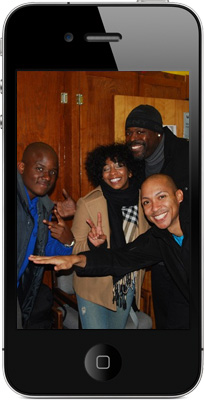The Saturday of Thanksgiving Weekend, 1991.
Having had more than my fill of turkey and parades with overstuffed balloons, I made a point that afternoon to tune in to NBC for a football game televised from New Orleans.
Called the Bayou Classic, this contest featured the Grambling State University Tigers, led by the late Eddie Robinson, the legendary, all-time winningest coach in Division-I football history, and the Southern University Jaguars—two historically black institutions in Louisiana whose rivalry was—and is—as intense as Auburn-Alabama, Michigan-Ohio State, UCLA-USC, or any other college rivalry one can name.
Although I knew about the Historically Black Colleges and Universities and how they produced many NFL greats like Walter Payton and Jerry Rice, as well as how they gave African Americans an opportunity for a college education at a time when they were barred from enrolling at most other schools due to segregation, particularly southern schools.
I also knew that this was the first time that black college football would be shown nationally. On network television.
By showing the Bayou Classic from a sold-out Superdome, I knew that America would be exposed to something that it hadn’t really gotten a chance to see outside Black America —Black College Football.
One thing that must be understood: College football at the HBCUs is not just a bunch of African American athletes running around on the gridiron. There is SO much more involved—events that are considered more important than the game itself.
And it lasts all weekend, rather that just one Saturday, the festivities usually start that Thursday.
One popular event that’s always connected with these classics—football games at the HBCUs are always called “Classics”—are the step shows.
These involve members of “The Divine Nine”—fraternities such as Phi Beta Sigma, Alpha Phi Alpha, and Omega Psi Phi (Michael Jordan’s and Shaquille O’Neal’s fraternity) and sororities such as Zeta Phi Beta and Alpha Kappa Alpha engaging in intricate dances, stomps, and movements that are often electrifying, crowd-pleasing, and mind-boggling.
Not to mention, a great source of pride and pleasure for all involved, these step shows are usually held on the Friday night before the game.
One other event, however, eclipses the step shows.
An event that is standard in black college football culture, it is considered more important than the actual game, to the extent that people don’t dare leave their seats to get refreshments until it’s over. It is something that’s always highly anticipated and never disappoints: The Battle of the Bands.
If you have ever seen the movie Drumline with Nick Cannon, then you will have an idea of what I’m talking about. In the HBCUs, the marching bands are taken VERY, VERY seriously, as are the halftime performances that these bands, some of them averaging 250 members or more, produce.
For the 20 minutes allotted between the second and third quarters, the two marching bands representing their respective schools battle it out on the field to see who can bring the house down, who has the best tunes, and especially who has the best moves.
The dance maneuvers that these bands produce are often mind-blowing; with their chair-step “drive it” marching style and sometimes going at 300 steps per minute, this is not the march of the toy soldiers out there.
Break dancing, “freaking”, “crumping”, bumping and grooving, bands such as Florida A&M’s “Marching 100” and Howard University’s “Showtime Band” use what I like to call the Malcolm X approach to make sure that the fans are absolutely worn out from their entertainment—By Any Means Necessary.
And the songs? P.Diddy, Outkast, Beyonce, 50 Cent—whatever’s hot on the hip-hop/funk/R&B charts. Plus “Old School” stuff from George Clinton and the Parliament-Funkadelic, Earth, Wind, and Fire, and the Jackson Five; it all gets a workout.
Oh, and they are perfectly capable of playing traditional Sousa marches, too.
Putting it another way—the networks never broadcast the halftime shows of teams like the Georgia Bulldogs, Texas Longhorns, Wisconsin Badgers, Tennessee Volunteers, or any of the other BCS bands. That period is strictly reserved for highlights and talking heads in suits going on and on about the day’s contests.
But in the HBCUs, broadcasting the halftime shows is standard and expected—that should say something.
Having been a recent graduate of a traditional marching band—UCLA’s “Solid Gold Sound” —when I saw Grambling State’s Tiger Marching Band and Southern’s “Human Jukebox” do their thing that afternoon in 1991, I never looked at marching bands the same way again.
From that day on, traditional marching bands at the BCS schools were seen as somewhat boring to me. Particularly compared to their black college counterparts.
The bottom line: In the black colleges, football is all about the entertainment, rather than being solely about football. Indeed, the young men and women involved give a show that’s not to be believed when first seen.
Why it has been kept a secret for so long, one may ask?
I honestly don’t know—perhaps because the schools are generally smaller that their BCS counterparts?
Perhaps because the network powers don’t feel that there’s a real audience for it? Or maybe the suits feel that the level of play may not be as good as in the SEC, the ACC, or the other BCS conferences, where the top black athletes generally prefer going to play.
Who knows?
In any case, I highly recommend checking out a HBCU football game, so you can see a slice of college football that until recently has been fairly hidden from the mainstream.
This year’s Southern vs. Grambling State game will be shown on NBC on November 30th, at 2 p.m. EST.
Believe me, you will not be disappointed.









More Stories
Black Homeownership Faces Persistent Barriers Despite Hard-Fought Gains – San Diego Voice and Viewpoint
Mobilizing for 2026: Chavis Urges Black Press to Act – San Diego Voice and Viewpoint
Beyond Tulsa: Uncovering America’s forgotten Black Wall Streets and their legacies today – Afro American Newspaper